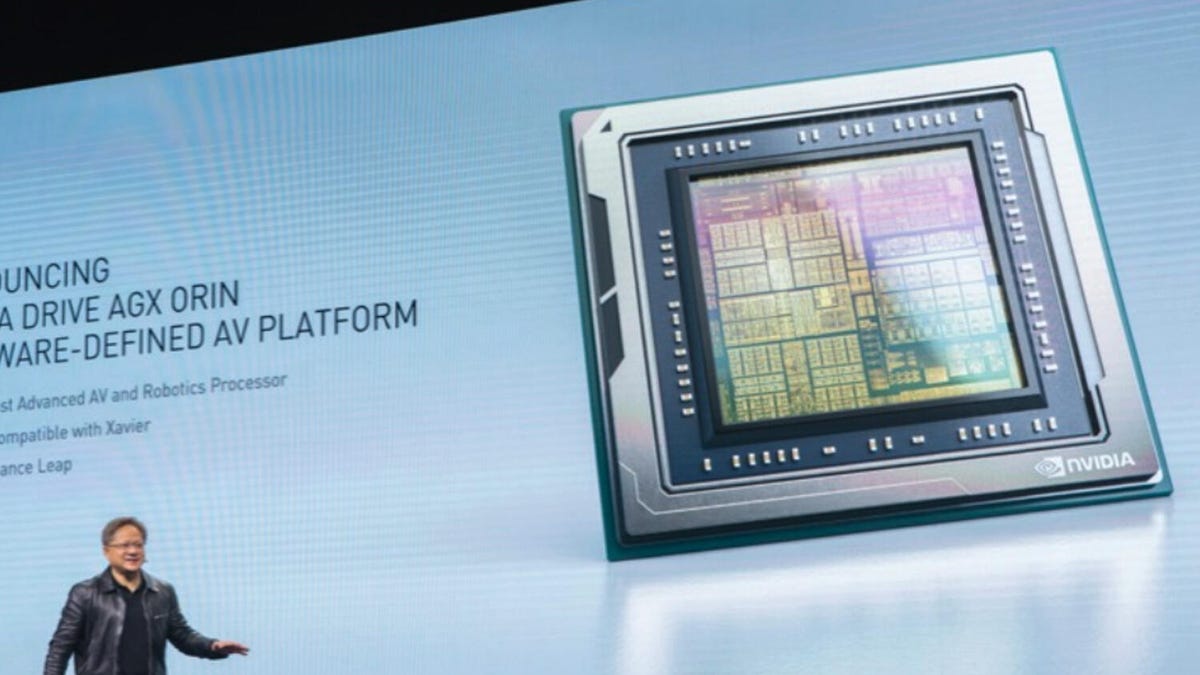Nvidia wants to power today's car tech and tomorrow's robotaxi
One chip to power everything, that's Nvidia's strategy.

Nvidia's new Orin system-on-a-chip can handle today's driver assistance and tomorrow's autonomy.
Self-driving cars aren't coming as quickly as most technology companies and automakers wanted. That's the cold, hard truth.
While the world waits for a breakthrough moment, chipmaker Nvidia is working to play both sides of the segment and unveiled a new architecture that suits automakers' needs today, and should serve them tomorrow. It's called the Ampere Architecture and it works with the company's new Orin system-on-a-chip platform, Nvidia said Thursday. The single architecture will handle anything from advanced driver-assistance systems to full, Level 5 autonomous driving, Nvidia said.
The on-paper advantages are immediately evident. If automakers can save on engineering and implement a single platform and chip for multiple functions, it should be a win-win. Today, there are typically two systems that automakers engineer around: basic ADAS and advanced partial autonomous systems. The single architecture should even help the more basic ADAS become smarter, according to the company.
While the promise of robotaxi fleets continues to move further away, automakers are focused on bringing more driver-assist systems to more vehicles. At the same time, a handful of automakers have pushed back timelines on self-driving cars, including Ford and General Motors. Full autonomy remains a holy grail for so many companies, however, that it's highly unlikely investment slows down for the foreseeable future.
Nvidia's new tech will enter sampling periods next year with production scheduled for 2022.

